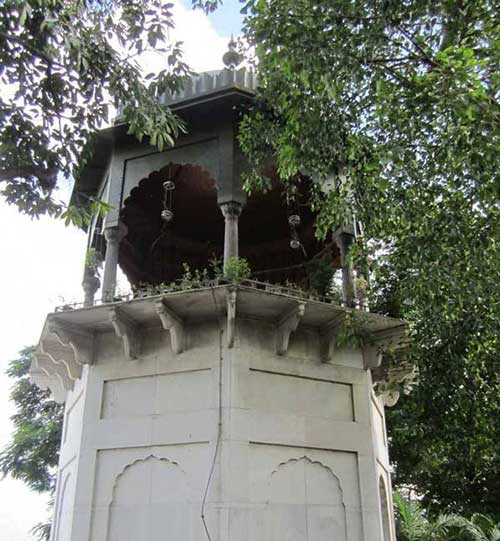
After the fall of Tipu Sultan of Mysore in 1799, the Marathas were the only major power left outside the British control. During that time, Gwalior ruled by Daulat Rao Scindia was an ally of the Maratha Empire, along with Peshwa of Pune, Gaekwad of Baroda, Bhonsale of Nagpur and Holkar of Indore and the East India Company in their attempt to expand their control, was trying to irritate them by their consecutive attacks. After being repeatedly defeated by the British troops, Daulat Rao had to sign the treaty of Surji-Arjungaon with the East India Company in December 1803, which was actually a defensive alliance with the East India Company. Later, it was further clarified by the signing of Treaty of Burhanpur in February 1804.

After the demise of Daulat Rao in 1827, Jankoji Rao II succeeded the throne of Gwalior, however, he passed away soon, in the month of February 1843. As he left the world without leaving an heir, Bhagirath Shinde was adopted and was succeeded the throne in 1843, at the tender age of 8, under the name of Jayaji Rao. To take the opportunity of the situations, the power mongers in the court became active and a civil war was impending. This made the British apprehensive about the growth of unwanted power in Gwalior and the East India Company decided to interfere citing violation of Article VI of Burhanpur Treaty. Accordingly, on the 13th day of December 1843 Lord Elleborough wrote to the Maharani of Gwalior to the effect that she should forcibly disband the disrupting elements and at the same time reduce the size of her army with immediate effect. However, the brave lady completely ignored the British advice, which was an order in disguise.

The East India Company could not digest this indifferent attitude on the part of the Maharani, as it was an open insult to their ego. Consequently, they decided to interfere in the internal affair of Gwalior and on 29 December 1843, the Gwalior Campaign was launched by Lord Ellenborough, the then Governor General of India. To divide the enemy force, the British opened two fronts and attacked the Marathas from both fronts at a time. The British, under the command of faced the Marathas in the Battle of Maharajpore, while Lt. General Sir John Grey encountered Maratha forces in the Battle of Punniar. Finally, the British own, but it was a hard earned victory, where both sides suffered several casualties and the triumphant British seized guns and artillery of the defeated Marathas. Aftermath the war, a new treaty was signed in 1844 and a British Governor was appointed in Gwalior Fort.

In 1847, Lord Ellenborough conceived the idea to build a Cenotaph, a memorial without any grave, to commemorate the memory of the fallen soldiers of the Gwalior War. Accordingly, Colonel H Goodwyn of Bengal Engineers, designed the octagonal cenotaph in Indo-Saracenic style, while Jessop & Co constructed the 58' 6" tall memorial, complete with a bronze dome, supported by eight bronze pillars. The most interesting fact about the Gwalior Monument is, its bronze dome was cast from the melted guns, seized from the Marathas.

The upper floor of the memorial, which looks like a Mughal ‘Chhatri’, can be accessed by a narrow spiral marble staircase from inside. It offers a beautiful view of the flowing Hoogly River, with Howrah Bridge at one end and the Vidyasagar Setu on the other. There is a marble plaque indicating the latest renovation of the Monument in 2012.